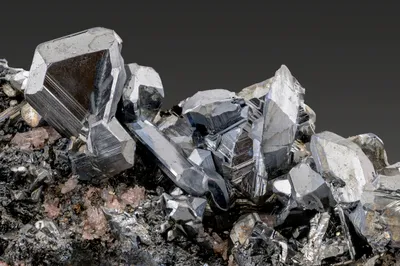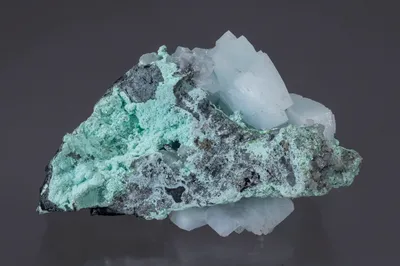Mineral Species
Leightonite
Type Locality
No
Composition
K2Ca2Cu2+(SO4)4·2H2O
Crystal System
Triclinic
Status at Tsumeb
Confirmed
Abundance
Extremely rare
Distribution
Second oxidation zone
Paragenesis
Supergene
Entry Number
Species; TSNB209
General Notes
Leightonite is part of an unusual paragenesis discovered in the North-East Stope on 35 Level in the second oxidation zone in January 1980. Leightonite crystals (to 1 mm) are associated with anhydrite, chalcanthite, lammerite, and ferroan thometzekite (Keller 1981; Keller and Bartelke 1982; Gebhard 1999).
Keller and Bartelke (1982) proposed the following paragenesis:
R/7: primary sulphides >> chalcocite >> lammerite >> unidentified silicates >> TK-like mineral [thometzekite] >> anhydrite >> leightonite >> chalcanthite >> gypsum
Leightonite presents as white to very pale green pseudo-orthorhombic crystals, elongated on [001]. It is associated with anhydrite and the two minerals are readily confused; however, the perfect cleavage of anhydrite distinguishes it from leightonite (Keller and Bartelke 1982).
Associated Minerals
anhydrite; chalcanthite; chalcocite; gypsum; lammerite; thometzekite


